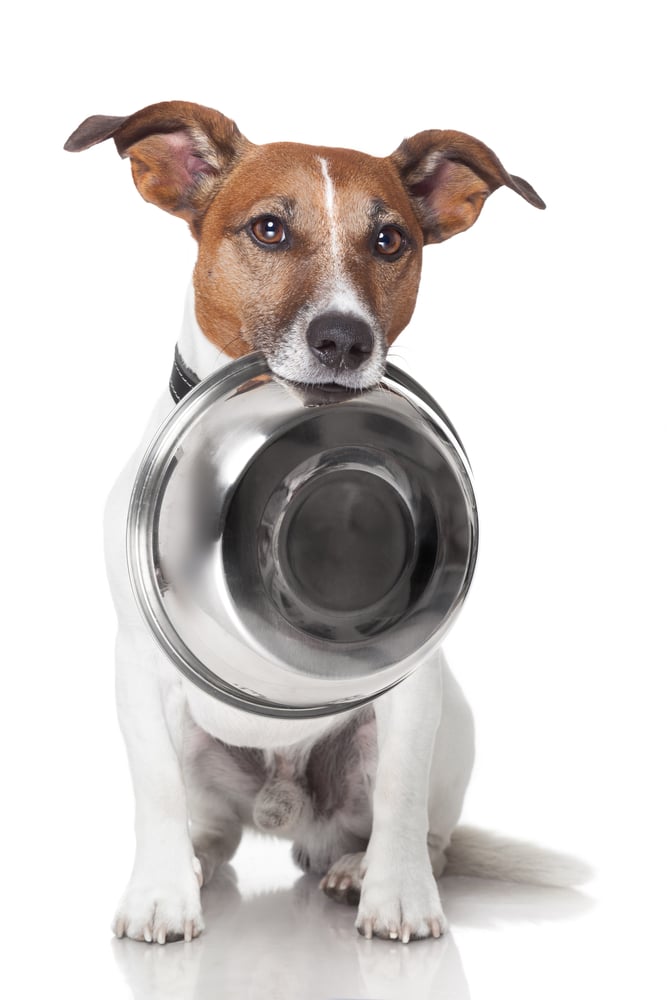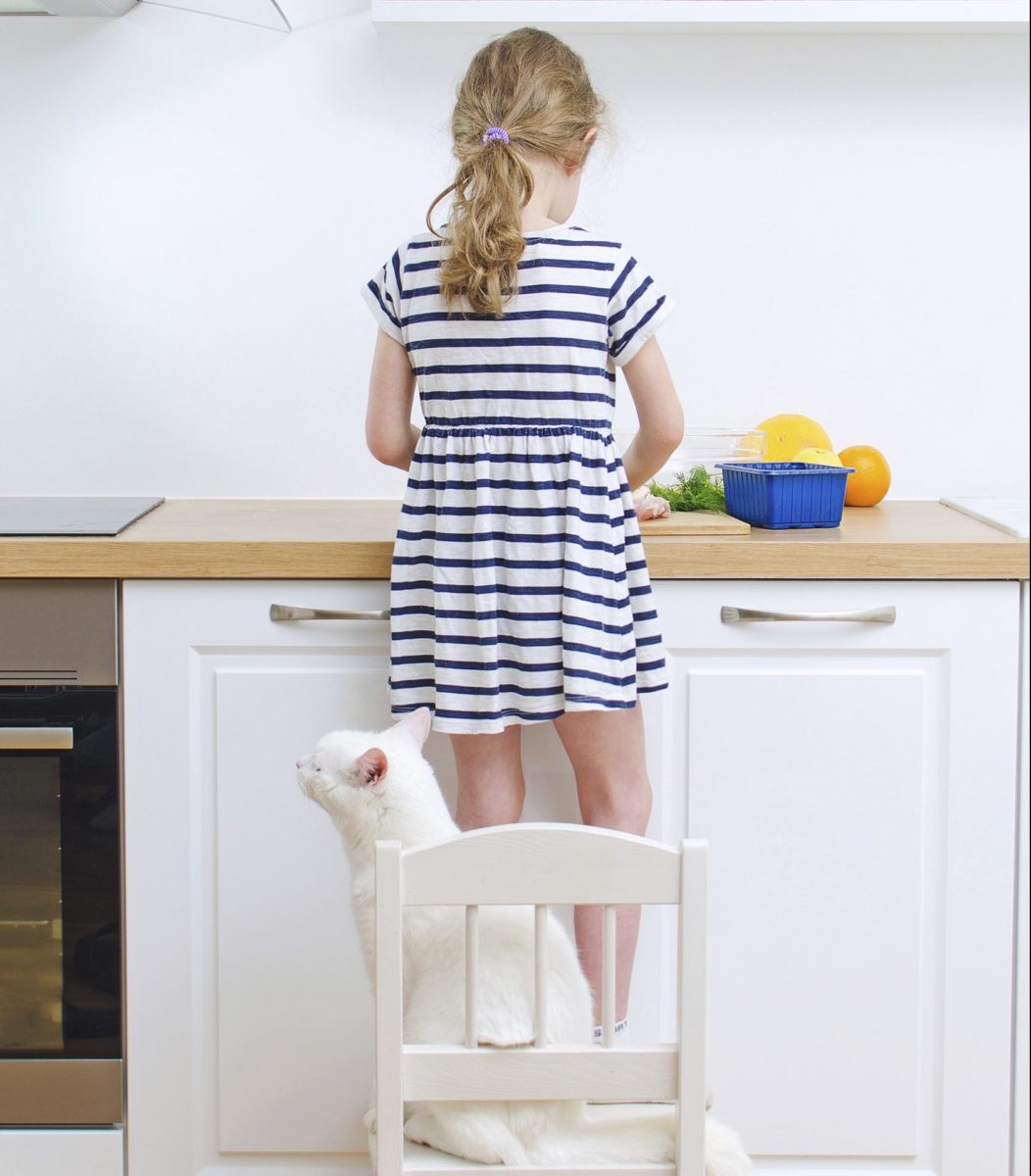Note from the Editor: Opinions regarding nutrition and feeding of all animals (including humans) vary. The advice and recipes in this column do not constitute professional recommendations. Be sure to consult your pet’s own medical practitioner regarding your pet’s diet and health needs, especially before changing your pet’s diet.
I did not expect to write a cookbook in 2007, but the circumstances of that March caused me to see that I could do more to help dogs and cats regarding their nutrition. At that time I was working as a veterinary surgeon in Myrtle Beach, South Carolina, USA, doing up to twenty cat spays and dog neuters daily.
But in one week in March everything changed, when reports of the deaths of dogs and cats from tainted pet food got my attention and that of the nation. A nationwide pet food recall of 150 brands of dog food and cat food caused their removal from stores.
Pet owners were scared. Clients of my clinic were panicked, and wondered what they could safely feed their pets. In response to their requests, on Post-Its and scraps of paper I wrote recipes for fresh foods. With my recipes these pet owners could shop for fresh ingredients at their grocery store, and cook wholesome safe food that wouldn’t hurt their dog or cat. They could control the freshness of the ingredients and the preparation of the recipes.
I decided to compile the recipes into a pet food cookbook for feeding dogs and cats. I included reference lists of foods and seasonings that I knew were safe, based on my training in animal nutrition and my veterinary clinical experience of thirty years. I also made lists of toxic foods and seasonings that provoked illnesses, and foods that are indigestible. I wrote the cookbook so that it would be easily used by anyone aged 12 and up, since families with children make up the largest percentage of pet owners in the United States.

Simple recipes are easy to make and are better for pets, too. Say no to complex recipes. Adults with limited cooking skills can easily prepare my recipes. If you’re an experienced cook, cooking for your pet will be a walk in the park! But keep things simple at first — try to restrain your creativity and make sure you are cooking the right food for your individual pet’s needs.
It was through the cooking and sharing of our food that gradually domesticated our pets. They ate what we ate. Pets became accustomed to eating cooked meats, vegetables, dairy foods, and grains. But not all foods that are healthy for people are good for pets. When in doubt, consult your own veterinarian, and inquire about vitamin supplements suitable for your pet’s age and activity level.
Try to ascertain what your pet already likes to eat. Does your pet like chicken, fish, or beef, carrots, peas, or green beans? List their favorite foods. Check to be sure the ingredients that you plan to use are safe for your pet. Then choose recipes to try, cook them, and serve them to your pet. Make notes about preferences — does your pet like foods with chunky texture, smooth, or sliced? Warm, cold, or room temperature? Is there any piece that it will try to bury or refuse to eat?
Soon you will be able to make food that will be accepted 100%. Use the nutrition facts below so that you do not underfeed or overfeed.
In the nutrition facts you will see percentages of carbohydrates and protein. The ratio of carbohydrate to protein should be approximately 1:1 for cats, 2-3:1 for dogs, 1:1.5 for kittens, and 1-2:1 for pups. Cats need a minimum of 30% protein in their diets, dogs the same. Kittens and puppies need more protein than adult cats and dogs.
And mind the calories – you need to do some math now. To calculate the number of calories your dog or pup needs daily, follow this example of an adult dog who weighs 30 lbs. and is spayed.
• Weigh your dog.
• Divide the weight in pounds by 2.2 to convert to kilograms (kg): A body weight of 30 pounds divided by 2.2 equals 13.6 kg.
• Multiply the result by 52.5. 52.5 x 13.6 kg = 714 calories daily
Choose a multiplier number according to your dog’s age, activity, and whether spayed/neutered.
Here are the multipliers:
[table id=3 /]
Multiply the calories you just calculated by the multiplier you have chosen. If you have a spayed/neutered dog the multiplier is 1.6:
1.6 x 714 = 1,142.40 calories daily
The result is called the MER, or maintenance energy requirement. This number is the estimated number of calories your dog needs to consume to maintain her/his weight.
• A dog may need 10-20% more or less calories per day. To monitor your dog, weigh once a week, recording the weight.
• If your dog is gaining weight (when you don’t want this), decrease calories by 10%.
• If your dog is losing weight (when you don’t want this), raise calories by 10%.
To calculate the number of calories your cat or kitten needs per day:
• Weigh your cat.
• Divide the weight in pounds by 2.2 to convert to kilograms. A body weight of 10 pounds divided by 2.2 equals 4.5 kg.
• Multiply the result by 52.5. 52.5 x 4.5 = 236.2 calories daily
Choose a multiplier number based on age, activity, and whether spayed/neutered:
[table id=4 /]
If your cat is spayed, the multiplier is 1.2: 1.2 x 236.2 = 283 calories daily
The result is the MER, maintenance energy requirement. This is the estimated number of calories your cat needs to maintain its present weight.
• Monitor your cat’s weight by weighing once a week. Record your cat’s weight, and note any trends up or down.
• If your cat is losing weight (and you don’t want this), increase calories by 10%.
• If your cat is gaining weight (and you don’t want this), decrease calories by 10%.
Now that you have an estimate of how many calories your dog or cat needs to maintain a healthy weight, here are two recipes. The total calorie count for each recipe, with nutrition facts and feeding guide for our two example pets, is noted at the end of each recipe. ![]()
First published October 2015
